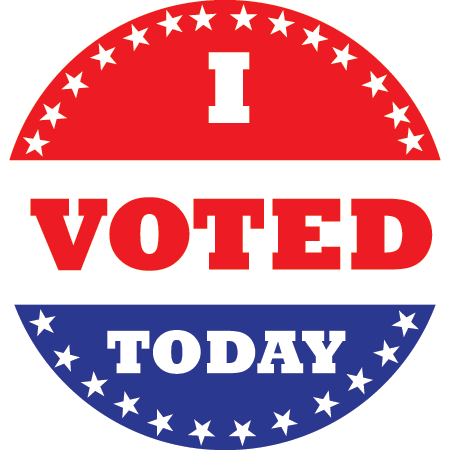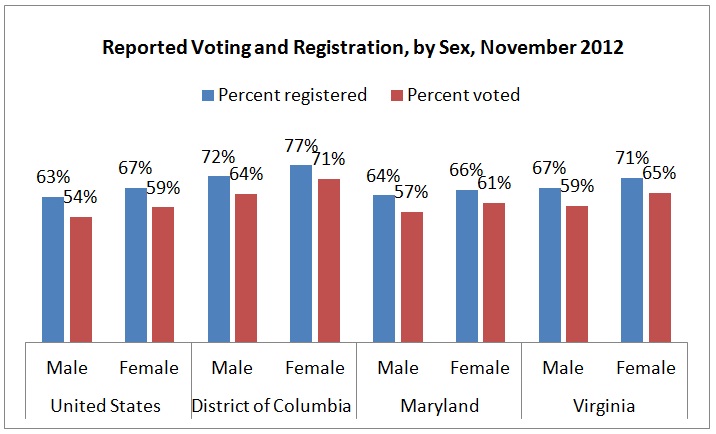This month, on August 26th, we will celebrate Women’s Equality Day, designated as such by Congress in 1971 to commemorate the 1920 passage of the 19th Amendment to the Constitution, granting women the right to vote. As we approach the day to celebrate this milestone in women’s history, we see there is both much to celebrate, and much work to be done around women and civic and political engagement.
First, the good news: women are making it out the polls in record numbers. Today, women are actively voting, running for office and creatively using their individual and collective power to bring about social and community change. The Census Bureau reports that since 1996, the number of citizens who have reported voting has increased in every presidential election. As in the country as a whole, in our region women are the majority of voters, and both register and vote at a slightly higher number and proportion than men, particularly in the District of Columbia.
Source: The Women’s Foundation compilation of data from the Bureau of the Census, 2012
In the November 2012 election, slightly under three-quarters of DC women voted (71 percent) in comparison with 64 percent of men. This was more than ten percentage points higher than the national voting rates for women (59 percent) and about ten percentage points higher for men (54 percent) in that election. Voting in Maryland and Virginia had lower rates than DC, closer to the national average; still, women’s civic participation was higher than men’s.
The same pattern holds for voter registration: Seventy-seven percent of DC women were registered to vote in 2012, in comparison with 72 percent of men, which was also higher than the national rates of 67 percent of women and 63 percent of men. In Virginia, 71 percent of women registered to vote compared to 66 percent in Maryland.
Now for the challenging news: While women may make up the majority of voters, there is a significant under-representation of women in political office. Today, women’s representation at the state and national levels falls short of the 51 percent needed to reflect their proportion in the population. For example, women only make up 18.5 percent of the US Congress: they hold just 99 of 535 full-voting Congressional seats, which is up from 90 in 2010.
The District of Columbia has one non-voting Congressional seat, which has been held by Representative Eleanor Holmes Norton for twelve terms. In Maryland, women hold two of the 10 Congressional seats: Senator Barbara Mikulski and Representative Donna Edwards. Thirty percent of the state legislature is made up of women and Maryland ranks 9th among states for the proportion of women in the state legislature.
Virginia holds 13 Congressional seats, none of which are currently filled by women.
The proportion of women in Virginia’s state legislature decreased from 19 percent in 2010 to 17 percent in 2014. Virginia ranks 40th among states for the proportion of women in the state legislature. The governors of both Maryland and Virginia are men, and neither state has ever elected a woman governor.
Equal political representation for women at the national, state and local levels is critical as it increases the likelihood that laws and policies will reflect the needs and interests of women and their families. Last year, we hosted a brown bag lunch with Rebecca Sive, author of Every Day is Election Day: A Woman’s Guide to Winning Any Office, from the PTA to the White House, to discuss this important topic. We encourage you to read highlights from the conversation and tweet your thoughts using #UseThe19th.
In the 43 years since Women’s Equality Day was designated, we have made impressive strides in the number of women who turn up at the polls to make their voices heard; however, women still are not sufficiently represented in political office – a place where, more than just having a voice, they have a platform and the power to make critical change for women, their families and the communities in which they live. We may be celebrating Women’s Equality Day this month, but equality in political office still remains far too aspirational. What can you do to raise your voice and be heard?




